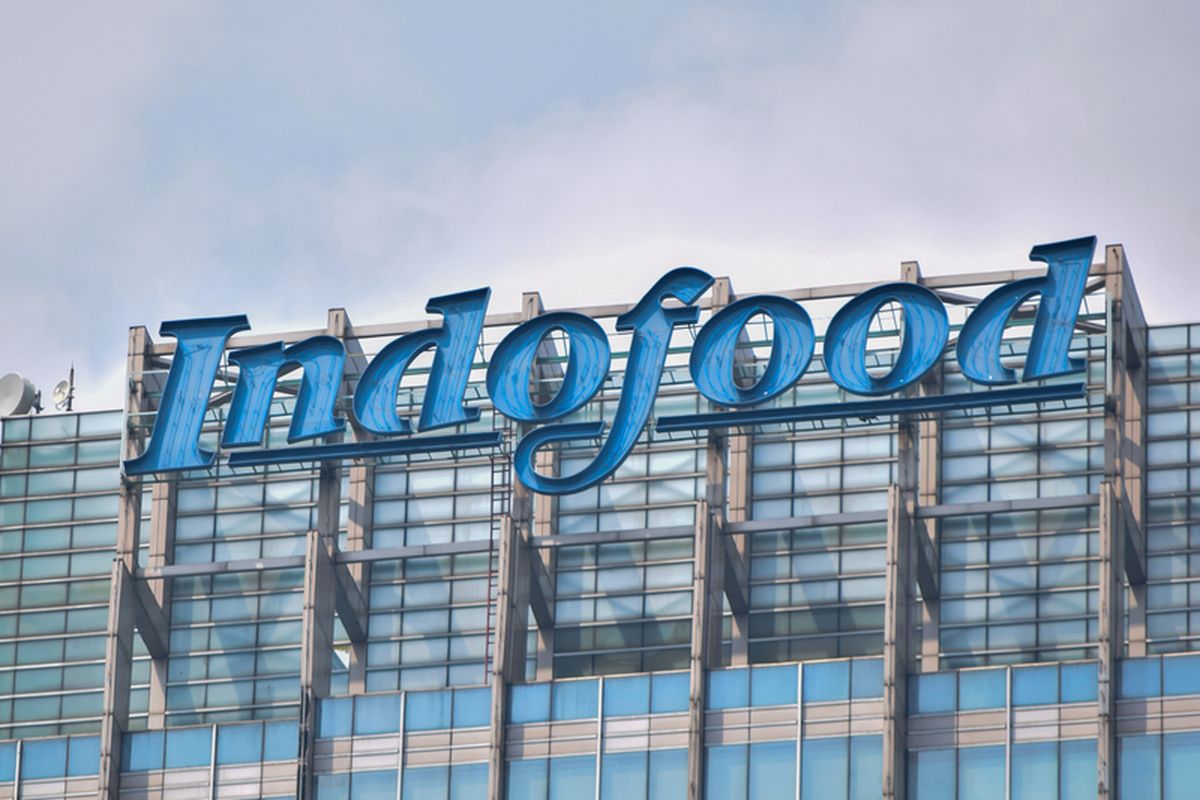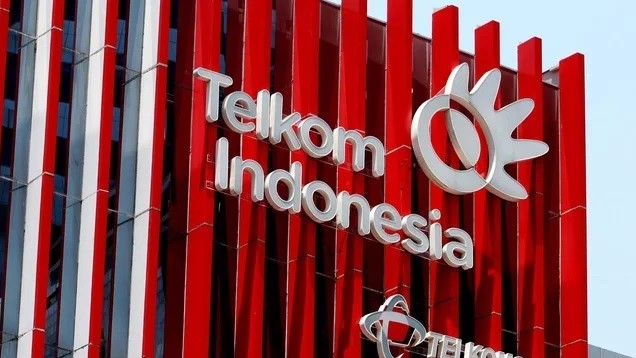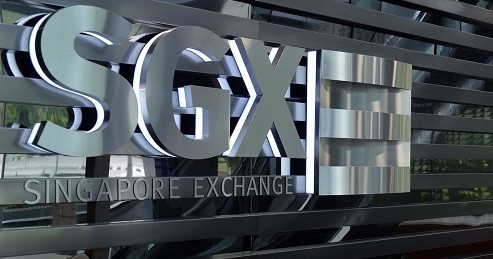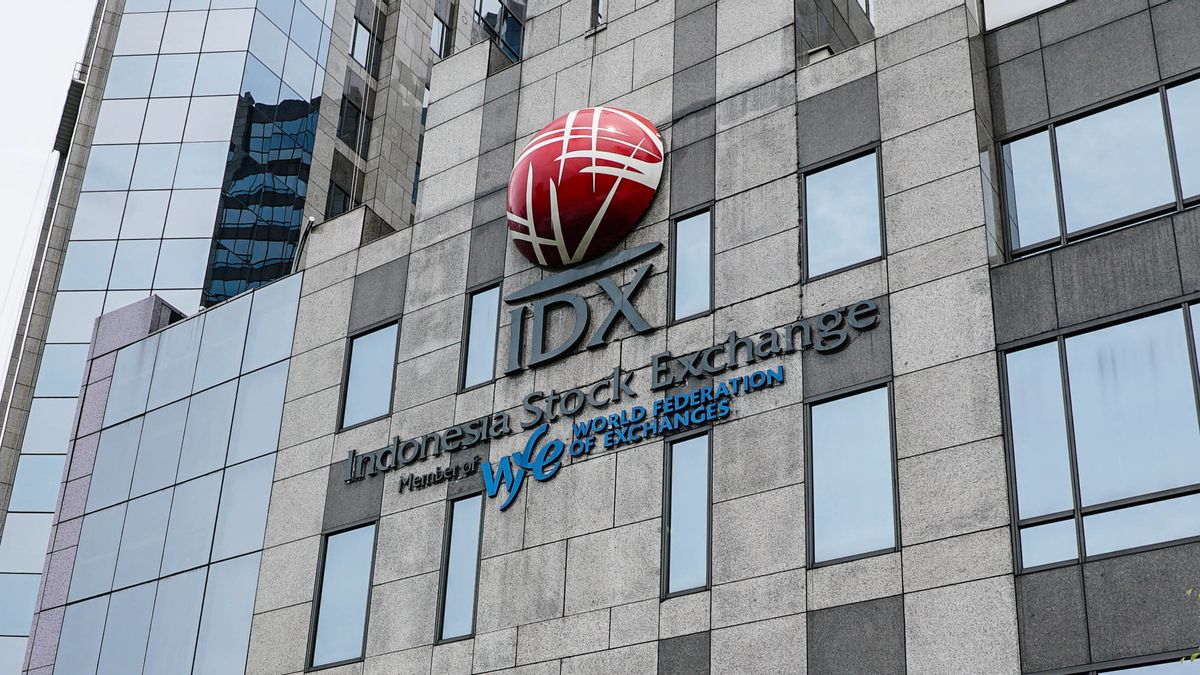3 New SDRs Launch on SGX: Your Gateway to Indonesia's Blue-Chip Giants
TLDR:
- Three SDRs: IBKD (Bank Central Asia), IICD (Indofood CBP), ITKD (Telkom Indonesia)
- Launch Date: 16 October 2025
- Trading: SGD, local market hours, board lots of 100 units, no FX or custody fees for CDP accounts
- Yields & Valuations: IBKD (4.1% yield, 14.7 P/E), IICD (2.9% yield, 12.5 P/E), ITKD (7.1% yield, 13.0 P/E)
- Total SDR Suite: 26 names across Thai, Hong Kong, and Indonesian underlyings
- September 2025 Stats: Record S$16 million daily turnover, AUM exceeding S$190 million
If you've ever fancied a punt on Indonesia's roaring economy but balked at the paperwork, currency headaches, and brokerage fees, your moment has arrived. From 16 October 2025, Singapore Exchange (SGX) is rolling out three Indonesian Singapore Depository Receipts (SDRs) that bring Bank Central Asia (IBKD), Indofood CBP (IICD), and Telkom Indonesia (ITKD) straight to your CDP account—trading in Singapore dollars, during local market hours, and with none of the administrative faff that typically comes with cross-border investing.
This isn't just a nice-to-have for portfolio diversification enthusiasts. It's a calculated play that taps into one of Southeast Asia's most compelling growth narratives at a time when Indonesia's economy is outpacing regional peers, and its blue-chip corporates are riding tailwinds from digitalisation, consumption growth, and infrastructure expansion.
Why Indonesia, and Why Now?
Indonesia's economic trajectory has been impossible to ignore. Despite a global backdrop of anaemic growth and geopolitical jitters, the archipelago clocked 5.12% GDP growth in Q2 2025, accelerating from 4.87% in the previous quarter. The World Bank projects Indonesia will maintain an average annual growth rate of 4.8% through 2027, underpinned by investment, government spending, and the rollout of President Prabowo Subianto's housing initiative and the new sovereign wealth fund, Danantara.
For high-earning Singaporean professionals looking beyond the Straits Times Index—where dividend yields are attractive but growth can feel pedestrian—Indonesia offers something different: scale, momentum, and demographic dividends. The country's working-age population continues to expand, digital adoption is accelerating, and sectors from banking to consumer goods are consolidating around market leaders with pricing power and brand equity.
Yet accessing this growth has historically meant navigating Indonesian brokerage accounts, managing rupiah exposure, and dealing with custody fees. Enter SDRs: a wrapper that strips away the complexity whilst preserving exposure to the underlying Indonesian-listed stock.
The Three New Entrants: Blue Chips With Substance
The inaugural batch of Indonesian SDRs isn't some speculative small-cap punt. These are household names with fortress balance sheets, dominant market positions, and analyst coverage that reads like a buy-side love letter.

Bank Central Asia (IBKD): The Digital Banking Juggernaut
Bank Central Asia (BCA) is Indonesia's largest private bank by market capitalisation, sitting at a hefty S$73 billion as of October 2025. This isn't just size for size's sake—BCA's profitability metrics are the envy of regional banking peers. The bank posted a return on equity (ROE) of 24.6% in 2024, up from 23.5% the prior year, with targets to maintain ROE above 21% for FY25.
What's driving this? A combination of loan growth above 13% year-on-year (outstripping the industry average), a net interest margin that expanded to 5.8% (+0.3 percentage points YoY), and an industry-leading current and savings account (CASA) ratio that keeps funding costs low and margins fat. Fee-based income now accounts for 17% of revenue, reflecting the bank's pivot towards digital transactions and payment solutions—a sensible hedge as Indonesia's fintech ecosystem matures.
In the first half of 2025 alone, BCA reported net income of 29 trillion rupiah, marking a 7.8% increase year-over-year. Asset quality improved too, with the Loan At Risk ratio falling to 5.3% (down 1.6 percentage points), whilst the bank maintained the highest Capital Adequacy Ratio among Indonesia's top four banks.
The IBKD SDR trades at an underlying-to-SDR ratio of 2:1, meaning one SDR represents half a share of BCA. With a last price of S$0.60 (IDR 7,775), the stock offers a 12-month dividend yield of 4.1% and trades at a P/E of 14.7. Analyst sentiment? Overwhelmingly bullish—34 buy ratings, three holds, and zero sells.
For Singaporean investors, BCA is a play on Indonesia's digital transformation and the financialisation of a cash-heavy economy. As digital payments scale and Indonesia's middle class (though shrinking as a proportion, more on that later) demands more sophisticated banking products, BCA's infrastructure and brand give it pole position.

Indofood CBP (IICD): The King of Instant Noodles
If you've ever slurped a packet of Indomie—and let's be honest, who hasn't—you've contributed to the empire that is Indofood CBP. The company dominates Indonesia's instant noodle market with a staggering 70% market share, and instant noodles account for 71% of its FY24 revenue.
The remaining segments include,
- Dairy (13%)
- Snack foods (6%)
- Food seasonings (6%)
- Nutrition and special foods (2%), and
- Beverages (2%).
Indofood CBP reported revenue growth of 7% year-on-year in 2024, hitting IDR 72.6 trillion, in line with management's 5–8% growth guidance. More impressively, EBIT margin expanded to 22.5%, comfortably above the 19–21% guidance range, whilst core profit rose 12% YoY to IDR 10.4 trillion despite goodwill impairment and foreign exchange headwinds. Operating profit climbed 13% YoY to IDR 16.3 trillion, buoyed by cost control and margin discipline.
The IICD SDR (underlying-to-SDR ratio of 2:1) trades at S$0.74 (IDR 9,625), with a market capitalisation of S$9 billion, a P/E of 12.5, and a 12-month dividend yield of 2.9%. Analyst coverage tilts heavily bullish—32 buys, one hold, and zero sells.
Why does this matter? Indonesia's consumption story is nuanced. Yes, the middle class as a proportion of the population has contracted—down to 17.1% in 2025 from 21.5% in 2019, according to official data. But absolute consumption continues to grow, driven by rising incomes and urbanisation. Household spending still accounts for 54.25% of GDP as of Q2 2025. Indofood's brands are sticky, affordable, and deeply embedded in Indonesian culture. Indomie isn't just a product; it's a national icon. As consumption patterns evolve, Indofood's diversification into dairy and snacks provides optionality beyond the core noodles franchise.
In the first half of 2025, Indofood CBP saw net profit surge 56% year-on-year to Rp 5.5 trillion, underscoring the earnings power of this consumer staples titan.

Telkom Indonesia (ITKD): The Backbone of Digital Infrastructure
Telkom Indonesia is the country's largest integrated telecommunications and network service provider, with a market capitalisation of S$24 billion.
Its business spans:
- Mobile services (43% of revenue)
- Consumer broadband via IndiHome (13%)
- Enterprise ICT solutions (23%), and
- Wholesale/international business (20%).
Revenue grew 0.5% YoY in 2024 to IDR 150 trillion—modest headline growth, but the story is in the mix. The consumer segment, which includes digital services, surged 10.7% YoY to IDR 113.3 trillion, led by a digital business contribution of IDR 78.3 trillion. Mobile subscribers reached 159.4 million, whilst IndiHome subscribers grew 7.7% YoY to 10.8 million.
More intriguingly, Telkom is pivoting hard into hyperscale data centre infrastructure to meet the explosion in AI and cloud demand. The company is expanding facilities in Batam and Cikarang, positioning itself as the backbone for AI workloads and digital transformation across Indonesia. In June 2025, Telkom announced a partnership with IBM to deliver an AI-powered sovereign platform built on IBM WatsonX, aimed at accelerating AI adoption for Indonesian businesses. Separately, Telkom launched the Telkom AI Centre of Excellence in September 2025, supported by four strategic pillars designed to drive AI integration across sectors.
Indonesia's cloud market is forecast to reach USD 2.44 billion in 2025, growing at a compound annual growth rate (CAGR) of 14.52%. AI-optimised data centre capacity is expected to balloon from $550 million to $1.44 billion by 2030. Telkom, through its subsidiary NeutraDC, is uniquely positioned to capture cross-border demand from Singapore, Malaysia, and beyond.
The ITKD SDR (underlying-to-SDR ratio of 5:1) trades at S$0.24 (IDR 3,190), offering a juicy 12-month dividend yield of 7.1%—amongst the highest in the SDR suite. With a P/E of 13.0 and analyst coverage of 31 buys and 11 holds, Telkom is a bet on infrastructure, digitalisation, and Indonesia's AI ambitions.

The SDR Advantage
So why bother with SDRs when you could, in theory, open an Indonesian brokerage account and buy the underlying shares directly? The answer lies in friction—or rather, the absence of it.
SDRs trade in Singapore dollars on SGX during local market hours (9:00 AM to 5:00 PM SGT), with board lots of 100 units. There are no foreign exchange charges, no custody fees for direct CDP accounts, and dividends are paid in SGD. For Singaporean investors, this means you can add Indonesian blue chips to your portfolio with the same ease as buying DBS or Singtel.
Importantly, SDRs are fungible with the underlying securities listed in Indonesia. If you decide you want direct ownership of the Indonesian-listed stock, you can convert your SDRs accordingly (though for most retail investors, the SDR wrapper is perfectly adequate).
SGX's SDR suite has grown rapidly since its inception. What began with Thai and Hong Kong underlyings in April 2023 and October 2024 respectively has now expanded to 26 names across three markets. In September 2025, SDRs achieved a record high daily turnover of S$16 million and assets under management (AUM) exceeding S$190 million—a testament to strong investor adoption. Notably, approximately 60% of SDR trades are executed in sizes smaller than the minimum investment required on the Hong Kong exchange, underscoring the appeal of bite-sized, flexible investing.
Demographic Dividends and Digital Disruption
Let's zoom out. Indonesia is the world's fourth most populous country, with over 270 million people and a median age of around 30. This demographic sweet spot—large, young, and increasingly urbanised—creates structural tailwinds for consumption, financial services, and digital infrastructure.
The Jakarta Composite Index has delivered 150% total returns over the past decade, with annualised returns exceeding 9%. The index hit all-time highs in September 2025, reflecting investor confidence in the reform agenda under the Prabowo administration and the resilience of Indonesian corporates in navigating global volatility.

That said, the consumption narrative is not without wrinkles. The contraction in the middle-class share of the population—from 21.5% in 2019 to 17.1% in 2025—has spooked some analysts. Household consumption, whilst still the backbone of the economy at 54.25% of GDP, has faced headwinds from inflation and tepid wage growth. Some retailers and FMCG players have noted consumers "penny-pinching," with discretionary spending under pressure.
But the counterpoint: the absolute size of the middle class is still immense, and Indonesia's consumer market is far from homogenous. Urban centres like Jakarta, Surabaya, and Bandung are seeing rapid adoption of e-commerce, digital payments, and fintech. Companies that can leverage digital channels and cost-efficient distribution—like BCA in banking and Indofood in FMCG—are gaining share at the expense of smaller, less capitalised competitors.
Moreover, the government's infrastructure and housing push, alongside the establishment of Danantara (the new sovereign wealth fund), signals a commitment to channelling capital into productive sectors. Investment is picking up, and with it, the potential for sustained GDP growth north of 4.5% annually through the decade.

Portfolio Positioning: Where Do These SDRs Fit?
For Singaporean investors, the question isn't whether to allocate to regional equities—it's how. The STI offers stability and dividends, but growth has been anaemic. Hong Kong and Thai SDRs (already listed on SGX) provide exposure to Chinese consumption and Thai tourism/exports respectively. Indonesian SDRs complete the regional mosaic, offering:
-
Diversification by geography and sector: Indonesia's economic drivers (consumption, banking, telecoms) differ from Singapore's trade-centric model or Thailand's export reliance.
-
Attractive valuations and yields: BCA trades at a P/E of 14.7 with 4.1% yield; Telkom at 13.0 P/E with 7.1% yield. For income-focused investors, Telkom's dividend is particularly compelling.
-
Growth optionality: Indofood's 56% profit jump in H1 2025 and BCA's consistent double-digit loan growth illustrate the earnings power available in Indonesia's best-in-class corporates.
-
Simplified execution: No need for multi-currency accounts, overseas brokers, or tax paperwork. Trade, hold, and receive dividends in SGD via your existing CDP account.
Risks Worth Acknowledging
No investment is without trade-offs. Indonesia's regulatory environment can be opaque, with policy shifts around foreign ownership, taxation, and sectoral access occurring with little notice. Currency volatility is another consideration—whilst SDRs eliminate the transactional FX headache, the underlying businesses generate earnings in rupiah, which has historically been volatile against the Singapore dollar.
Political risk, whilst reduced under the current administration's pro-growth agenda, remains a wildcard. Indonesia's democracy is vibrant but can be unpredictable, and shifts in policy—particularly around subsidies, tariffs, or foreign investment—can materially impact corporate profitability.
Finally, the middle-class consumption slowdown is real. If wage growth doesn't accelerate and inflation remains sticky, discretionary spending could remain under pressure, weighing on consumer-facing companies like Indofood. Similarly, if global tech spending cools, Telkom's data centre ambitions may take longer to pay off.

The Verdict: A Rare Combination of Access and Quality
The launch of Indonesian SDRs on SGX is more than a product expansion—it's a democratisation of access to one of Asia's most dynamic economies. For years, Singaporean investors wanting exposure to Indonesian blue chips faced a choice: accept the complexity of cross-border investing or miss out entirely. Now, that choice is obsolete.
Bank Central Asia offers a play on digital banking and financial deepening. Indofood CBP is a defensive consumer staples bet with pricing power and brand equity. Telkom Indonesia is infrastructure and AI in a single ticker. Together, these three stocks represent sectors foundational to Indonesia's growth trajectory: finance, consumption, and digital infrastructure.
With SDRs now covering 26 names across Thailand, Hong Kong, and Indonesia, SGX has quietly built a compelling suite of regional equity instruments that punch above their weight in terms of accessibility, cost, and investor adoption. September's record turnover of S$16 million and AUM above S$190 million suggest the market is paying attention.
For high-earning professionals with diversified portfolios, Indonesian SDRs offer a rare combination: blue-chip quality, growth exposure, income optionality, and zero operational faff. The only question left is whether you're ready to add a slice of Southeast Asia's giant to your CDP account—before everyone else does.
Let us know what you think about this topic, and what do you want to hear next.
You can now be our community contributor and make a pitch to have your favourite personality be on our show.
Join our community group and drop us your insights on this topic.
Sources & Further Reading:
- SGX, "SDR Campaign"
- World Bank, "Indonesia Economic Update"
- Jakarta Globe, "Indonesia's Shrinking Middle Class Threatens Growth Consumption"
- IBM, "Telkom Indonesia AI Platform"
- Asia Food & Beverages, "Indofood H1 2025 Results"

-4.png?width=50&name=Square%20(2)-4.png)









Let us know what you think of this post